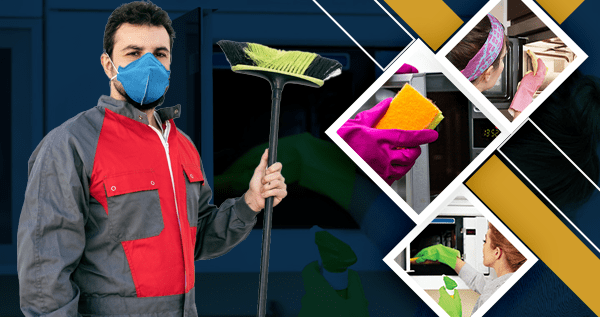Introduction
When it comes to the hospitality industry, cleanliness is of utmost importance. Clean hotel rooms and common areas are not only a reflection of the hotel’s reputation but also essential for the health and well-being of the guests. At Crystal Facilities Management, we understand the significance of maintaining high cleanliness standards. In this article, we will discuss the best practices for cleaning hotel rooms and common areas to ensure a pleasant and hygienic experience for all guests.
The Importance of Cleaning
1. Guest Satisfaction: A clean and well-maintained hotel room is a key factor in guest satisfaction. It creates a positive impression, leading to higher guest loyalty and increased bookings.
2. Health and Safety: Proper cleaning practices prevent the spread of germs and viruses, ensuring a healthy environment for guests and staff. This is particularly vital during flu seasons and other contagious outbreaks.
3. Reputation: Hotels known for their cleanliness have a better reputation and are more likely to receive positive reviews and recommendations from guests.
General Cleaning Guidelines
1. Develop a Cleaning Checklist: Establish a comprehensive cleaning checklist that covers all the areas and items to be cleaned in each hotel room and common area. This helps ensure that no area is missed during the cleaning process.
2. Train the Cleaning Staff: Regular training sessions should be conducted to educate the cleaning staff about proper cleaning procedures, hygiene practices, and the use of cleaning equipment and chemicals.
3. Use Environmentally Friendly Products: Opt for eco-friendly cleaning products that do not contain harmful chemicals. This not only protects the health of guests but also demonstrates the hotel’s commitment to sustainability.
4. Follow a Cleaning Schedule: Establish a consistent cleaning schedule that includes regular daily cleaning tasks as well as periodic deep cleaning of carpets, curtains, and upholstery.
Cleaning Hotel Rooms
1. Disinfect High-Touch Surfaces: Pay extra attention to disinfecting high-touch surfaces such as doorknobs, light switches, remote controls, and telephones. Use a disinfectant approved by health authorities for maximum effectiveness.
2. Change Linens and Towels: Replace all linens and towels, including bed sheets, pillowcases, bath towels, and floor mats, with clean ones for each new guest. Ensure these items are washed at high temperatures to eliminate germs.
3. Vacuum and Dust: Thoroughly vacuum carpets and upholstered furniture to remove dirt, dust, and allergens. Dust all surfaces, including furniture, shelves, and decorative items.
4. Clean the Bathroom: Scrub and disinfect all bathroom fixtures, including the toilet, sink, shower, and bathtub. Replace bath amenities such as soap, shampoo, and conditioner for each new guest.
Cleaning Common Areas
1. Entrance and Lobby: Sweep and mop the entrance area regularly, ensuring it is clean and free of debris. Clean and disinfect the reception counter, door handles, and seating areas. Pay extra attention to glass surfaces, ensuring they are streak-free.
2. Elevators and Staircases: Clean elevator buttons, handrails, and walls of the elevators. Sweep and mop staircases, paying attention to corners and edges.
3. Hallways and Corridors: Vacuum hallways and corridors daily, ensuring they are free of dirt and debris. Dust surfaces such as handrails, decorative items, and artwork.
4. Restaurants and Dining Areas: Clean tables, chairs, and buffet counters thoroughly after each use. Follow strict food safety procedures, ensuring the kitchen and food preparation areas are sanitized.
5. Fitness Centers and Pool Areas: Regularly clean exercise equipment and ensure it is well-maintained. Clean and disinfect pool areas, including changing rooms, showers, and poolside furniture.
Special Cleaning Considerations
1. Air Quality: Regularly maintain the HVAC system to ensure clean and fresh air in hotel rooms and common areas. Clean air filters and vents to prevent the spread of allergens and improve air quality.
2. Guest Complaints: Promptly address any cleanliness concerns or complaints raised by guests. Investigate the issue, take appropriate action, and follow up to ensure guest satisfaction.
3. Emergency Cleaning: Establish a plan for emergency cleaning situations, such as spills or accidents. Train staff on how to respond quickly and effectively to minimize disruption and maintain cleanliness.
4. Green Initiatives: Implement green cleaning initiatives, such as using energy-efficient equipment, recycling cleaning materials, and minimizing water usage.
Conclusion
At Crystal Facilities Management, we believe that following best practices for cleaning hotel rooms and common areas is essential for the success of any hotel. By prioritizing cleanliness, hotels can create a positive guest experience, protect the health and safety of their guests and staff, and strengthen their reputation in the industry. Remember to train your cleaning staff, use environmentally friendly products, and develop a detailed cleaning checklist. By implementing these practices, hotels can maintain the highest standards of cleanliness and exceed guest expectations.












